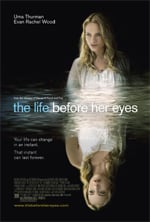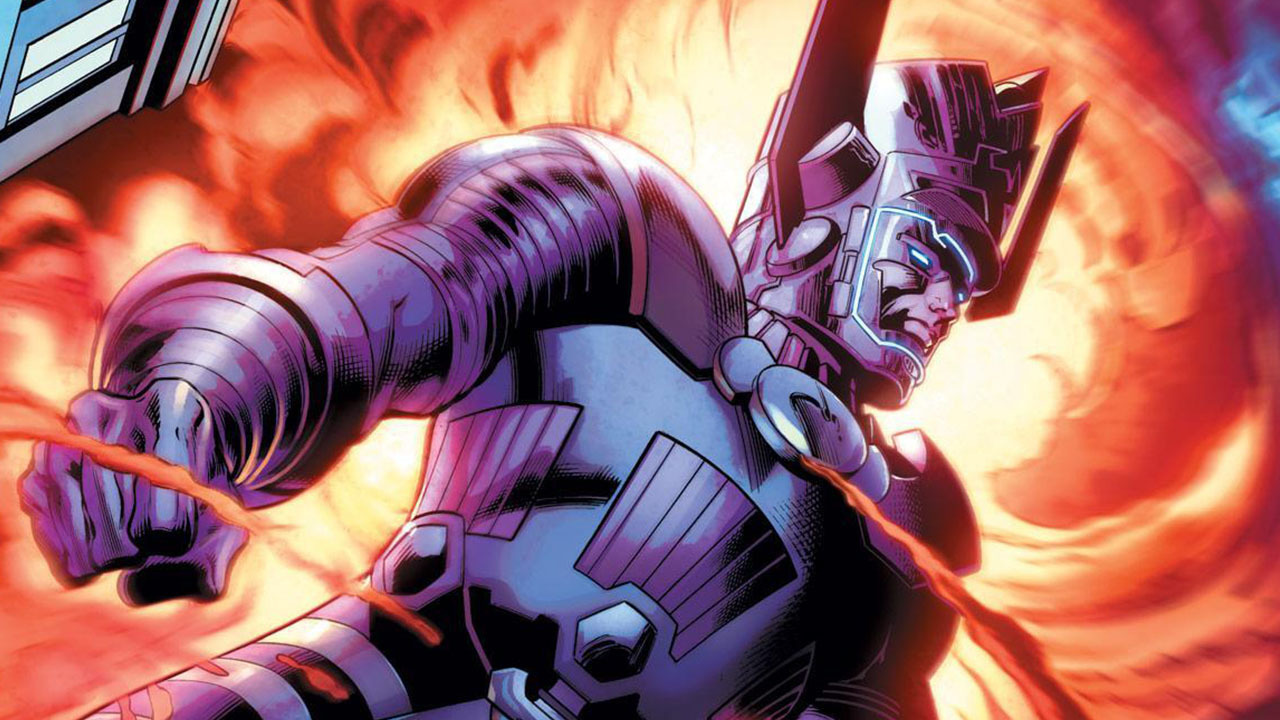If complexity were a virtue, The Life Before Her Eyes would be positively saintly. In this case, however, “complexity” is just another way of saying “huge mess with no central narrative in sight”. A dirge-like character study spiked with copious amounts of female pathos, The Life Before Her Eyes tries to be a nuanced examination of how unspeakable secrets burden the souls of those who have experienced great misfortune. Instead it’s just an exercise in frustration with no pay off and no nuance.
The film tells the story of Diana (Uma Thurman), a small town art history professor haunted by her past as the survivor of a high school shooting. While a teenager she was contemptuous of authority, a trait she is now dismayed to see emerging in her young daughter. With the anniversary of the tragedy approaching Diana becomes more troubled by her memories of the day. It’s obvious that she is a woman with major unresolved guilt issues but it would be impossible to discern any of this from the pallid Thurman, who wanders through the film squeezing out tears and furrowing her brow in anguish.
Grownup Diana may be no fun to watch but The Life Before Her Eyes also gives us a series of flashbacks featuring teenage rebel Diana (Evan Rachel Wood) to better flesh out the shell-shocked husk of a woman she becomes. Unfortunately, the high school version of Diana is not really much fun to watch either. Though she purses her lips, sleeps around, and yaps about wanting to blow out of town the first chance she gets Wood only has two modes for her character: thoughtful and catatonic. What a rebel! Luckily she has a vaguely religious, goody-good best friend Marueen (Eva Amurri) to put up with her maddening myopic worldview.
Despite their ostensible differences the girls are inseparable and do most everything together. They are even together when the school shooting begins and the shooter (a typical high school loser, you can tell from his pasty whiteness and diminutive stature) bursts into the bathroom where the girls have holed up. This pivotal scene is played out over and over again, each time edging closer to a resolution. Diana looks frightened, Emily weeps; the shooter slowly moves his gun from one girl to the other. Just then film switches back to another shot of Thurman driving her SUV, looking miserable.
And so it goes for the length of the movie, which toggles incessantly between the present and the past. I suppose the abundance of flashbacks was meant to mimic the watery quality of memory; the way past events merge into the present and become indistinct. Yet The Life Before Her Eyes uses flashbacks in an incredibly clumsy way, rendering the line between past and present so fluid as to become inscrutable. Instead of using technique to illuminate the various threads of the narrative, it simply ties them into knots. After a while it’s impossible to follow the many questions laid out before us. What happened in the high school bathroom? Does Evan Rachel Wood really age into Uma Thurman?
The worst part of The Life Before Her Eyes is how dishonest it is. Throughout it’s running time the film implies that there is dark secret motivating Diana and that its revelation will ultimately make sense of everything else that has happened on screen, like a final puzzle piece falling into place. It’s an old trick but a reliable one and, if well executed, can salvage even the most indecipherable of films. Or at least persuade the audience that there was something worthwhile cleverly hidden in the preceding dreck, making all that dreck seem better in hindsight. Sadly there’s nothing about the final minutes of The Life Before Her Eyes that erases the memory of the parade of jumbled nonsense preceding them.
The Fantastic Four: First Steps Director Thankfully Didn't Rely Solely On Motion-Capture To Bring Galactus To Life, And I Couldn’t Be Happier With This Approach
Wait, Is Cate Blanchett Planning To Retire From Acting? Here’s What The Actress Says
If You Like Drop, There's Another Real Time Thriller You Need To Watch Immediately











